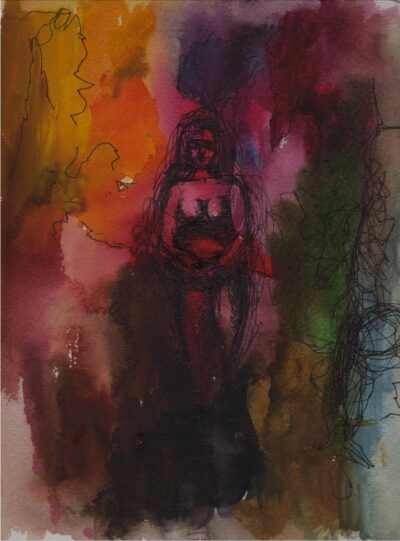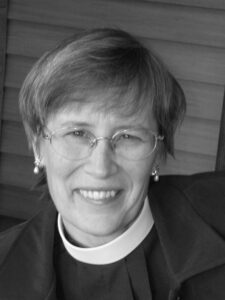Tamar and Tamar’s Midwife
 We have had an interesting start to our 7-month book study. I hope you are enjoying every aspect of it and that you will join in the conversation. What did I know about Tamar before reading about her in Bible Women? I knew she was the first of five women mentioned in Matthew’s genealogy of Jesus, and I only knew that because Bishop Michael Curry of North Carolina told me so in a talk he gave a few years ago to the ECW of Oklahoma.
We have had an interesting start to our 7-month book study. I hope you are enjoying every aspect of it and that you will join in the conversation. What did I know about Tamar before reading about her in Bible Women? I knew she was the first of five women mentioned in Matthew’s genealogy of Jesus, and I only knew that because Bishop Michael Curry of North Carolina told me so in a talk he gave a few years ago to the ECW of Oklahoma.
We learn a lot about ourselves by studying our genealogy and finding a place where we belong. Tracing one’s family pedigree is regarded by many societies as vitally important. It is your name and your background that opens doors for you, determines who you marry, and what work you might do. In our more democratic and diverse country we no longer bar the doors because of one’s name or ancestry. And yet, knowing and telling the story of our family is an important way of understanding how we came to be the people we are. I have a friend who is very much engaged in genealogy. She has gotten past the trunk of her family tree and even the larger branches. Now she is researching those smaller twigs of her family that bring the excitement of new discoveries and the joy of connecting to previously unknown family members.
Tamar is one of those smaller twigs in the genealogy of Jesus. In the genealogies of the Book of Genesis there are no mothers named, but in Matthew’s genealogy we find “Judah the father of Perez and Zerah by Tamar.” Lindsay Hardin Freeman+ notes that Tamar was not a Jew (p. 66), and neither were three other women in Jesus’ family tree: the Canannite, Rahab; the Moabite, Ruth; and the Hittite, Bathsheba, wife of Uriah.
When God spoke to Abraham, the first name in Jesus’ genealogy, God said: “Look toward heaven and count the stars, if you are able to count them. So shall your descendents be.” We see now that the family of Jesus includes Tamar and other women who are not descendents of Abraham, yet can be counted beyond the stars. Why do you think Matthew included Tamar as one of only 5 women named in Jesus’ lineage? How does it make you feel to be a member of the family of God, to be counted beyond the stars?
Studying one’s family can dig up some quite interesting stories. Can you imagine discovering someone like Tamar? She is the real stuff; you can’t make this up! The hope of motherhood is a strong incentive to do whatever is necessary to achieve it. “Take note, please, whose these are: the signet and the cord and the staff.” What have your maternal ancestors done to achieve motherhood? What have you done? I myself went through years of fertility tests and treatments. It was embarrassing and humbling, yet in the end, with the birth of my second son, worth it.
What did I know about Tamar’s midwife before reading about her in Bible Women? Why, absolutely nothing. Because of Lindsay’s book, I am learning that several midwives spoke in the Bible. At a time in history when any childbirth could be difficult, the birth of twins would be not only painful but dangerous. How blessed Tamar must have felt to have an accomplished midwife at her side. To have known that twins were coming and to have the foresight to mark the first born (though in this instance the crimson thread was premature – “This one came out first.”) are great attributes of a veteran midwife.
Although these two women are not well known outside of Bible scholars, and although their words are few, they both play a vital role in the continuity of the Hebrew line from Abraham to Perez to Jesus.
How have these 2 women impressed you, both individually and collectively?
Tamar depicted in Claire’s illustration has a posture and presence to her as she holds the objects of Judah’s pledge in her hands. What does Tamar’s posture say to you?
What “For reflection” questions from these Chapter 3 Genesis women jump out for you?
What would you add to the “What might we learn from” lists for Tamar and Tamar’s midwife?
++++ Coming December 1st ++++
Miriam
Content provided by Author Lindsay Hardin Freeman
Illustration: Claire Elam




